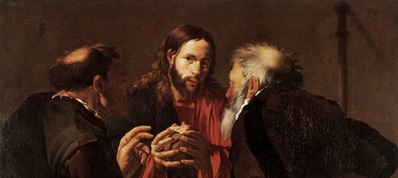As I entered our large cafeteria here in Nijmegen last week, my eye caught a group of about 20 young students sitting in a circle. In the middle sat a girl who held a framed picture of a student friend in her hands. Also on the table were flowers, and a burning candle. The atmosphere was cold and sombre. A few girls cried softly while others recalled special moments they shared with their friend in the picture. It took me seconds to realize that these students were gathered to pay tribute to a friend who passed away. This unforgettable “picture” made me think (as so often!) about life, death and life beyond death. Will there really be a resurrection one day? Did Jesus really rise from the dead as his followers believed? If so, how should or could that be translated for 21st century Europeans?

Anton Wessels (to the right), emeritus professor of Missiology and Religion at the Free University of Amsterdam, wrote a thought provoking book in 1994 called: EUROPE: Was it Ever Really Christian? (translated by John Bowden from the Dutch Kerstening en Ontkerstening van Europa. Wisselwerking tussen Evangelie en Cultuur). In chapter V under the heading The Interaction between the Gospel and Present-Day European Culture, he attempts to discuss (among other topics) “Death and resurrection” in such a way as to bridge the gap between traditional Christianity on the one hand and modern Europe on the other. For this he quotes an excerpt from George Steiner’s work, Real Presence:
“To the Christian, that day [Sunday] signifies an intimation, both assured and precarious, both evident and beyond comprehension, of resurrection, of justice and a love that have conquered death. If we are non-Christians or non-believers, we know of that Sunday in precisely analogous terms. We conceive of it as the day of liberation from inhumanity and servitude. We look to resolution, be they therapeutic or political, be they social or messianic. The lineaments of that Sunday carry the name of hope” (p190-1).
I did not read Wessels’ whole book but the impression I got from the sections I did read was that he tries to “develop an eye for . . . truth [in] myth”; he wants to translate the gospel for modern Europeans; and reveal the “mystery of the Christian faith” (p162).
I am certainly not in a position to give an informed analysis of a volume in the field of Missiology. As for the resurrection of Jesus, and its implications for humanity (within the field of New Testament exegesis) several critical questions could be asked following Steiner and Wessels’ deductions. That I leave for another day. Only one question for now: Is it really so that “non-Christians . . . know of that Sunday in precisely analogous terms” as followers of Jesus Christ do?
 Richard B Hays comes up with the following suggestion: "[I]t is the Corinthians, not Paul, who contend that God will destroy the merely physical elements of the self . . . this has to be the correct way to interpret the passage, for the idea that the physical body is unimportant is precisely the point that Paul is trying to refute" (Richard B Hays, First Corinthians, 1997, p103). Does this make sense?
Richard B Hays comes up with the following suggestion: "[I]t is the Corinthians, not Paul, who contend that God will destroy the merely physical elements of the self . . . this has to be the correct way to interpret the passage, for the idea that the physical body is unimportant is precisely the point that Paul is trying to refute" (Richard B Hays, First Corinthians, 1997, p103). Does this make sense?










